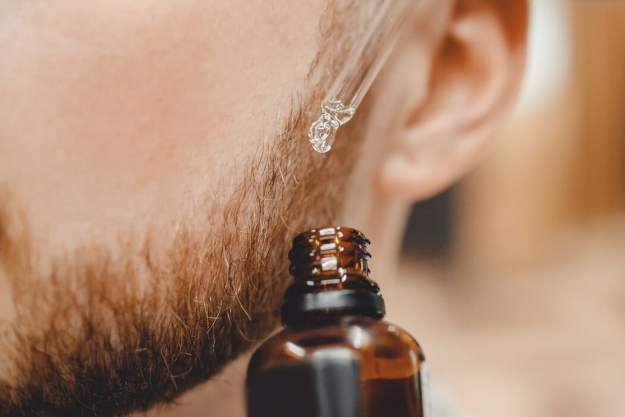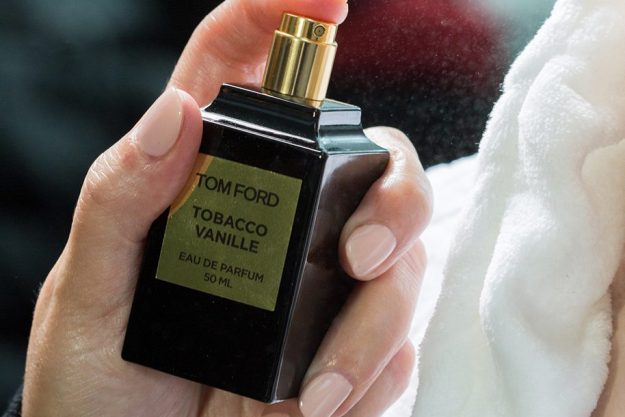
For outdoorsman, all those years of spending time in the sun (hiking, running, beach bumming etc.) have probably taken a toll on their faces. The fine lines have become wrinkles, the eye bags have turned into luggage, and that scattering of freckles has become a fleet of age spots. The sun’s harmful, skin-aging rays have well been documented. It happens to all of us — some of us later than others, depending on how well we have taken care of our skin — but trust us when we say, no one is safe. You’re going to have to figure out how to deal with the sun exposure.
Good for you if you’ve been wearing sunscreen everyday and using retinol, but for some of us, the information that has arrived has been too little, too late. Now we’re stuck with some pretty gnarly damage to the ‘ole money maker — but it’s not a lost cause. There are a few ways to go about repairing sun-damaged skin, from treatments we can go pick up ourselves to laser beams for our faces. Different methods work better for different people, so we’ve outlined some of the best options for reversing the effects of sun damage. We would recommend seeing a dermatologist before doing too much on your own.
Vitamin C-based Creams and Serums
The most popular antioxidant for topical use is vitamin C, and there are a lot of vitamin C-based creams and serums out there, from inexpensive cult favorites like The Ordinary to top-notch, dermatologist-recommended brands like SkinCeuticals. By applying these super lightweight serums to your face after cleansing, you’re allowing the potent ingredients (such as vitamin C) to penetrate as deeply in the skin as possible. These help to lighten the spots you have now, but also act to help fend off future damage. Keep in mind, these are not a replacement for sunscreen; they only act as an additional layer of protection. The more gentle the solution (if you can purchase it without a doctor, consider it fairly gentle), the longer it is going to take to see results. But stick with it — it pays off.

Retinol Spot Treatments
Some people say these are worth it, others are less enthused. Our opinion: If it helps reverse sun damage, we’re in. Spot treatments are super concentrated products made with various ingredients that lighten the skin, but the very best are going to have one key ingredient: Retinol. This is not to be confused with a vitamin A prescription product (which we’ll get to a little later). Spot treatments are a gentler over-the-counter version that works to exfoliate skin at a faster rate. That means those dark skin cells are lifted away from the skin, effectively bringing the spot to match the skin tone around it.
Prescriptions
Hydroquinone and Tretinoin (Retin-A) are going to be the best of the best when it comes to creams that help reverse sun damage. Hydroquinone is a controversial topical ingredient because it works by inhibiting melanin production, which lightens the skin. Some studies have shown that long-term usage may damage skin cells. Typically, though, this is a short-term remedy for intense damage. A more common topical cream is Tretinoin, also called Retin-A. Once used for younger guys with severe acne, it was found to help decrease wrinkles and dark spots because it increases cell-turnover in the skin though exfoliation. This means newer skin is making its way to the surface faster and, if protected by a daily sunscreen, it’ll look brighter, smoother, and younger over time.

Chemical Peels
These have come a long way since the days when you had to take a week off work to recover in private. Of course, those intense peels are still around, and the most popular among them use glycolic, trichloroacetic, salicylic, lactic, and carbolic acids to essentially burn the skin off — in a controlled way — to allow newer, younger skin to replace it. This helps to lessen the dark spots and deep wrinkles associated with sun damage. If done repeatedly over long periods of time, skin will look much more even and youthful.
However, the trend in chemical treatments in recent years has moved from severe single treatments to more gentle treatments in greater succession. Lower concentrations of the same acids, combined with skin-soothing ingredients, allow you to leave the dermatologist’s office with less redness and irritation for a shorter period of time — some can even be applied at home.
Intense Pulsed Light
The most aggressive treatment involves Intense Pulsed Light, or IPL. You won’t find one of these over the counter, that’s for sure. These are lasers found in dermatologist’s offices and, depending on the frequency chosen, can be used to remove hair, help rosacea, or get rid of spider veins. This is best suited for targeting specific spots or small areas, like freckles and checks, respectively. When used for pigmentation (the irregular dark spots from past sun exposure) the IPL effectively damages the spot, allowing the body to dispose of the dead cells and reveal more even skin quickly afterwards. What you can expect from an IPL treatment is a bunch of pain as it’s happening and a few days of slight redness, but you can actually watch the spots die and fall off you face.
Sun damage is one of the hardest afflictions to treat topically. That being said, using a good antioxidant, a vitamin A product (Retinoid, Retinol, or Retin-A), and, of course, a sunscreen everyday (Every. Single. Day. No. Exceptions.) will get your skin into the best shape you can get it in on your own. If you’re noticing spots and wondering what the next step would be, see your dermatologist (or find one through the American Academy of Dermatology database) and make an appointment, right away. Most people put off making an appointment to these magical mystery doctors because they don’t see anything particularly weird on their skin, but these brave men and women can see things we, as laymen, cannot. They can also help us keep our skin in good enough shape where we may never feel the need to do all this reversing stuff.



